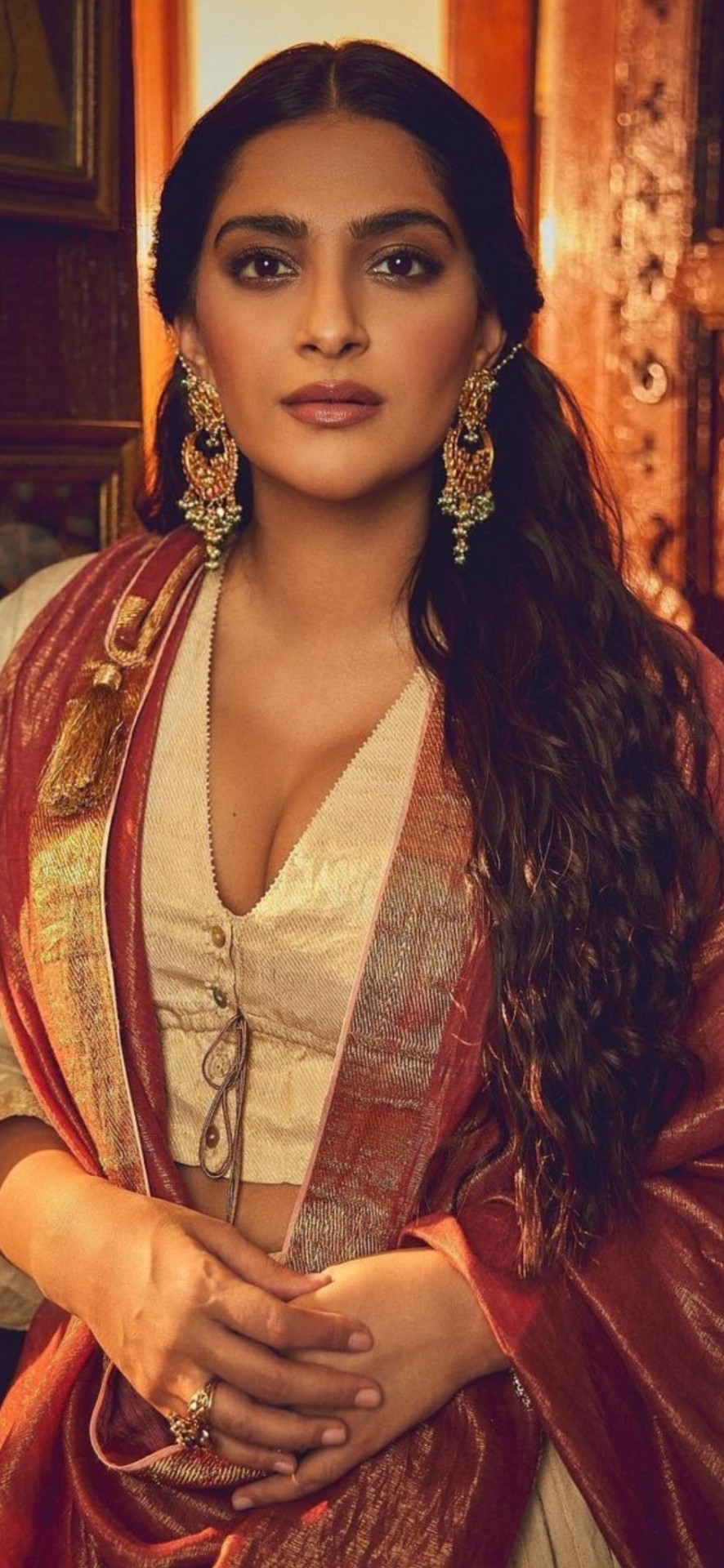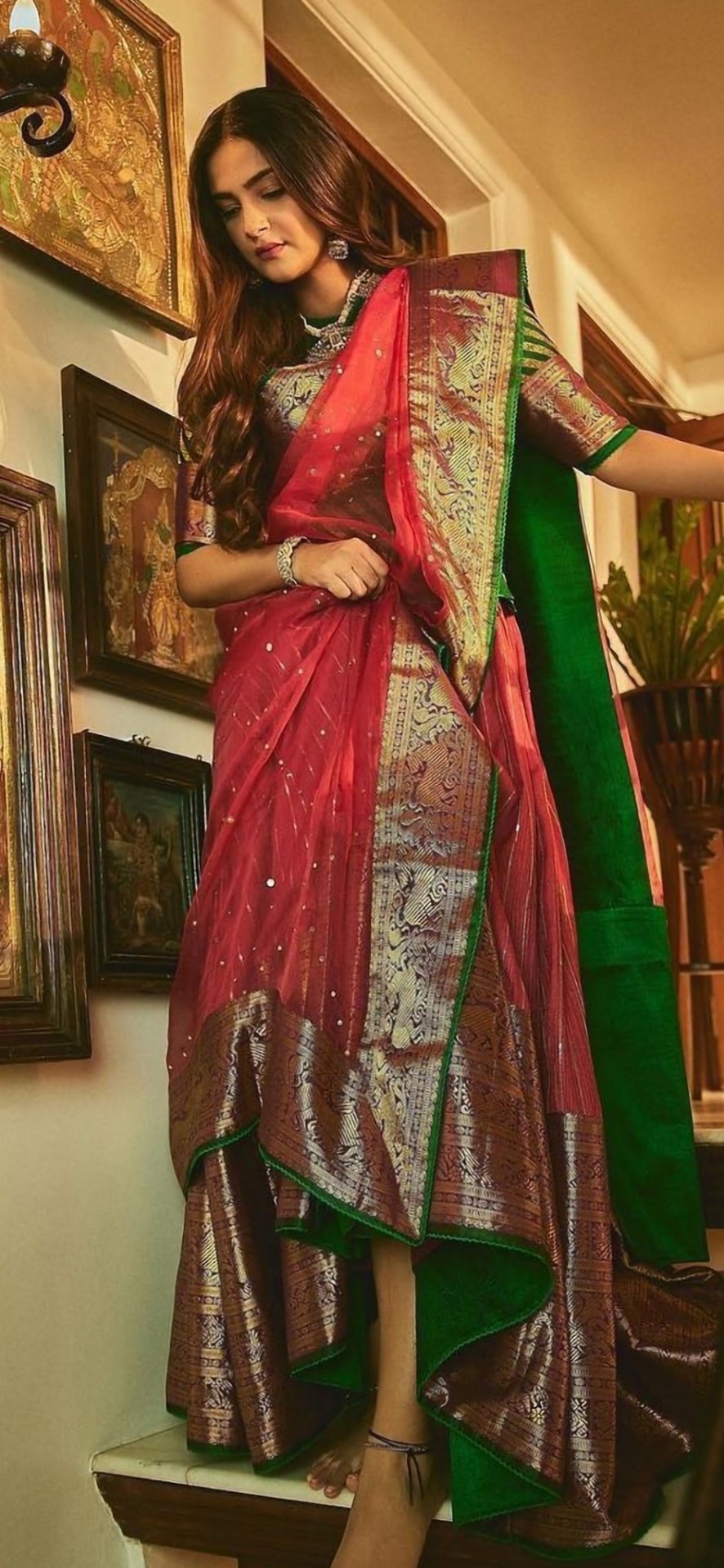#indian attires
Text
Indian Attires
Kurti
In modern usage, a short kurta is referred to as the kurti, which is the attire of females.It is a typical dressing pattern of Indians especially the northern regions.
The origin of this clothing style is from the northern India and it is worn by females majorly in north while the south prefers saree.
Flared Kurtis
Flared kurtis are elegant. They swing both ways, so you could wear them for both a formal set-up and just as daily wear.
Printed kurti
There is a never-ending list of beautiful printed kurtis. From baltic to block print, Kalamkari to digital print, Bandhani to Chikankari, and Gota Patti, there are so many varieties.
Anarkali Kurtis
The anarkali kurti is made up of a long frock-style top and features a slim fitted bottom. It varies in length and embroidery such as floor-length. .This dress is generally worn by Kathak dancers.
Asymmetrical Kurtis
Asymmetrical designs are fancy, smart, and sophisticated. These usually come without side slits and add to the aesthetics of the outfit.
Side slit kurtis
Kurtis with a side slit are so in right now. Especially the floor length ones, with a thigh-high slit, take your style to the next level.
Angrakha kurtis
Angrakha is a style similar to a wrap around, where a big chunk of the dress side sweeps on to the other side like a flap, which can be embellished and decked up with pom-poms.
2 notes
·
View notes
Text
youtube
How to drape a saree? Navratri Special Video. Please do shower your love on this video and subscribe the channel!
1 note
·
View note
Text

#sherwani#pakistan#pakistani outfit#pakistani costume#pakistani attire#pakistani fashion#india#indian#indian fashion#indian folk#indian costume#indian culture#indian attire#indian outfit#southeast asia#asian#man's fashion#man fashion#asian folk#asian fashion#asian costume#asian culture#asian outfit#asian attire#asian folk costume#pakistani culture#pakistani folk#शेरवानी
73 notes
·
View notes
Text
Crowley and Aziraphale in Indian (South Asian) attire drawn by artist Hana Adamová
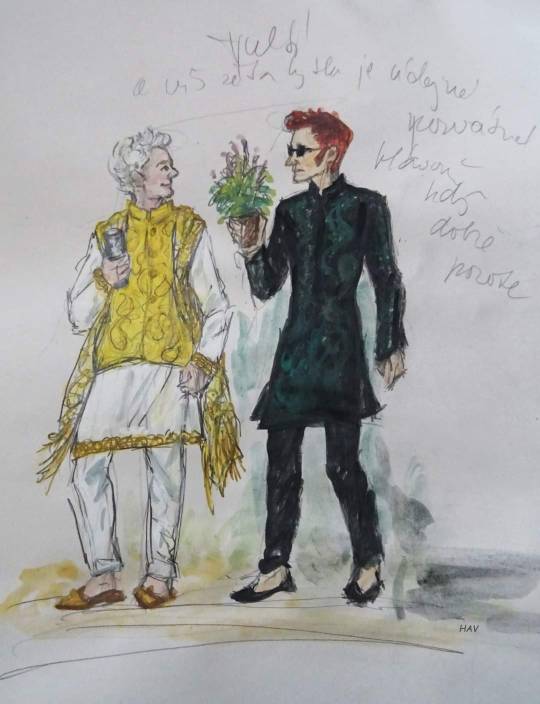
The reason behind their inspiration of drawing them in Indian attire is absolutely beautiful and I must share this along with the art.
Hana says
I could see it on black brocade silk :-)
Otherwise, this picture was created not only because I like traditional Indian clothes, but also because of mythology. Crovley is constantly guarded by Hell, and I wish him the kind of free-spirited freedom that demons in Hindu mythology have. They are unique, they are not subject to anyone and when they are evil, they can be absolutely terrible that even the gods can have problems with them, but if they want to and do a good deed, then it is purely their business .and there are also demons, for example, who even watch temples and tombs.. at least what i know.....
Free Will. That's what Crowley always spoke up for. That's what Crowley as Asura in Hindu Mythology would have been able to get without having to answer to anyone or be in constant fear of being destroyed by heaven or hell.
And he would have been able to befriend and love a Sura Aziraphale. Cause Aziraphale would have been an Indian god too who would've had free will and no supreme god or any heavenly host answer to.
This truly makes my heart full to view them in such light ❤️
Below is Hana's comment on fb post

#crowley x aziraphale#Crowley and Aziraphale in Indian attire#Crowley and Aziraphale in hindu mythology#Crowley as a free demon#Aziraphale as a free god#crowley fanart#aziraphale fanart#good omens#good omens 2#ineffable husbands#aziraphale x crowley#good omens meta#aziraphale and crowley#good omens fanart#crowley#Aziraphale#Free Will In Good Omens#good omens but in hindu mythology
52 notes
·
View notes
Text
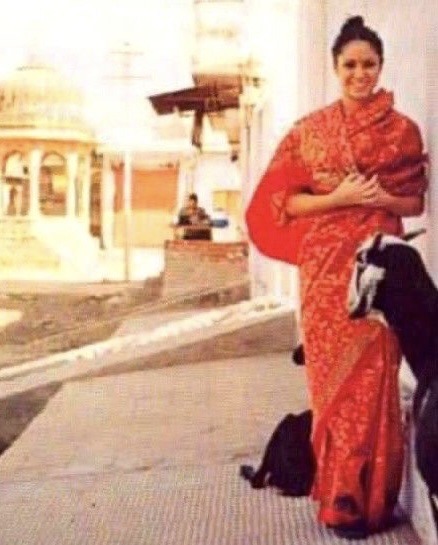


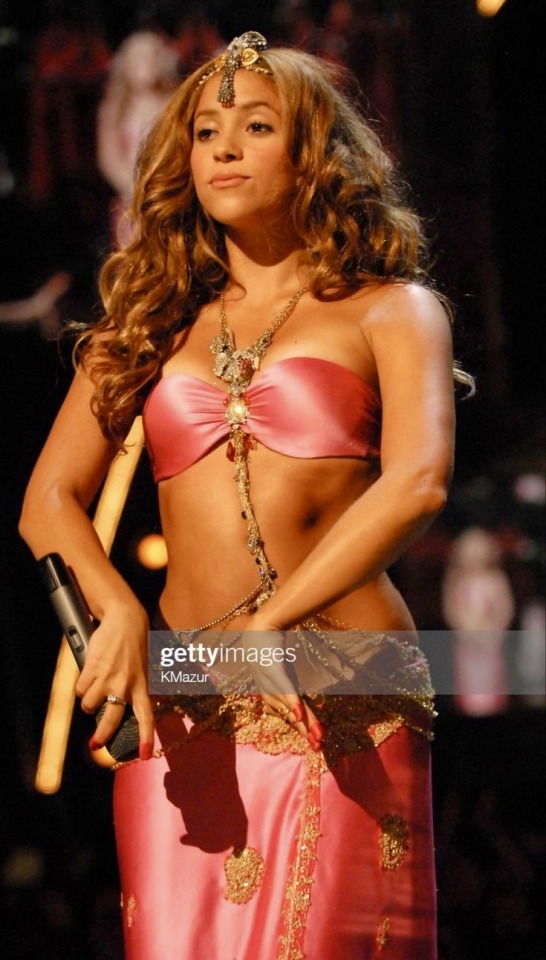
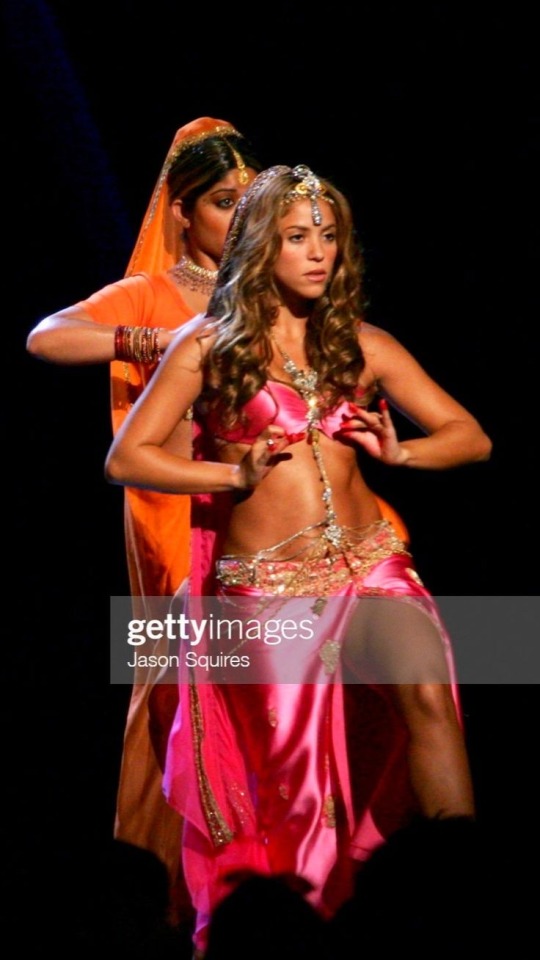




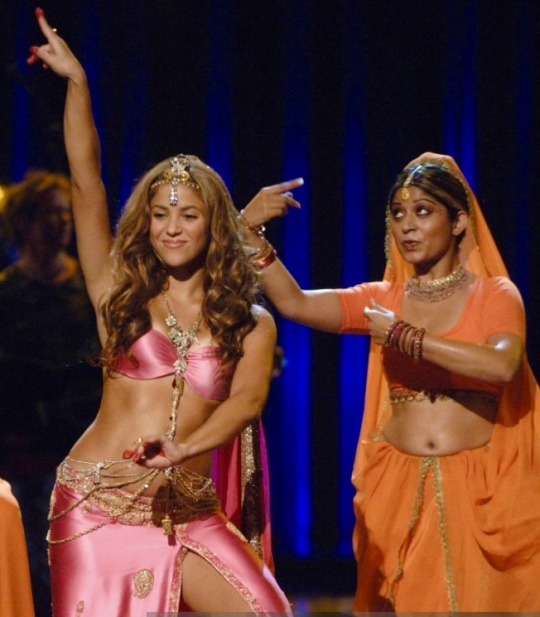
Shakira wearing Indian attire embracing the Indian culture. 🇨🇴🇮🇳 A Colombian woman dressed in desi fashion.
#colombian#Shakira#Latina#colombiana#shakira mebarak#desi culture#indian culture#Indian attire#indian wear#indian fashion#bollywood fashion#desi#India#celebrity#Shak#henna#mehndi#desi fashion#desi attire#sari#saree#new york#nyc#hips don’t lie#NY#desi stuff
38 notes
·
View notes
Text
The Kate Sharmas in Real Life : Indian women in 19th Century Attire
As an Austenite, I find Bridgerton an abomination, from the costume to plotline. However, like many people I found the 2nd season a bit tolerable especially the storytelling. Simone Ashley who was Kate Sharma (it’s rather pronounced as “sher-ma”) reminded me someone, especially someone dressed in western clothes in colonial India.
It is a preconceived notion by many that Indian people, especially women did not wore western clothes until it was post 1960s, but it is not true. The most fundamental garment, a blouse for saree was a Victorian addition. The eastern Indian women often worn saree as a single garment, and in ancient times, Saree or “akhanda vastra” (undivided cloth) was worn with a “kanchuki” underneath, or an Indian version of Bandeau. Blouse, in its modern form was then called a Chemise (semij, as the local vernacular called it). It came as in late 19th century, and the trendsetters were Upper class Bengali women. Rabindranath Tagore mentions how modern yet scandalising it was for a woman to wear a “Semij” in his numerous novels, especially in Chokher Bali .The picture below is of Princess Sudhira of Cooch Behar wearing what can be deemed as the earliest Indo-Western Fusion fashion in 1900s (she was known to have some good european wardrobe)

You might be thinking, Indo-Western garment is not anything near to the empire line Regency costume! yes, it is not. But before you at me, behold this historical photograph.

She is Maharani Suniti Devi, Queen of the Princely state of Cooch Behar, North Bengal. This shot was taken at 1902. I Know I am 100 years too late but during the 1813 Indian royals were busy from saving their states from the British Subsidiary Alliances, and Artisans were getting crushed by the flooding capitalists as the Monopoly of the East Indian Company was abolished by the 1813 Charter Act--- long story short, they didn’t wear the western garments that early. I picked her photo specifically because Simone Ashley, as Kate Sharma reminded me of her. Tall, slim, thin mouth, bright eyes, voluminous hair and dark skin.
It is not that there are no dark skin rulers in India, and there were no royal women who donned western clothes--there are: in Fact the Daughter of Daleep Singh, the last Sikh Emperor and the Maharani of Kapurthala, both were photographed in Late Edwardian costumes in the beginning of 20th century. My pick is specially Suniti Devi because she exudes a classic ethnic Bengali beauty. I am emphasising on the fact Bengali because in Indian pop-culture Bengali women are portrayed as docile soft shy beings venerated for their big eyes and pliant beauty. However here you can see that this women is anything but. She is properly clothed in Late Victorian gown. From the prim contours of the waist it is clear that she is wearing proper undergarments like longline corset; light bustle as it was fashionable at that time and the correct petticoat. Loose but well arranged Gibson curls define her thick Bengali waves at the front of the head. The entire thing does not come off as costume-like, she looks like she was made for wearing it: she was not obviously corset trained because Indians often prefer loose fitted clothing and yet she does not look least bit out of place in that dress.
Despite everything western in that dress from the Gibson hair to the black passmentary lace detaiiing on the white skirt, there is a distinct Indianness that graces the outfit. A long trail of English tulle is draped across the chest, as to emulate the shoulder drape of the saree: in India, a gentleman’s daughter is required to cover her chest with the drape of saree or a light scarf with Salwar. She didn’t need to; she was a Maharani, she could go without it, but she chose to drape it anyway. she also wears bangles in both hands, again a Custom by Bengali women who think a girl should not leave her wrists empty, because it symbolises widowhood. It was unlikely for a Victorian or Edwardian woman to wear bangles in both hands, especially without gloves-- but she did it anyway.
This distinct Indianness with western outfit is the exact essence which Kate replicated in the Wedding Scene
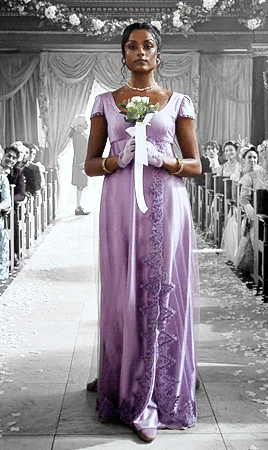
#bridgerton#kate sharma#period costume#indian queens#19th century attire#indian queens in western attire#regency#victorians#costume history#indo western#colonial indian history
79 notes
·
View notes
Text
self proclaimed sanatani guy on his way to put aatma rama soundtrack on the most non sanatani video ever:

#like imagine saying “indian women wear western attire no go back to your roots”#and putting aatma rama on top of it;-;#like bhagwaan Ramchandra has any responsibility of your hypocrisy whatsoever#hypocrisy because ik banane waale ne khud kachhe baniyan mein baithke banayi hogi#hypocrisy#desiblr#hindublr
29 notes
·
View notes
Text
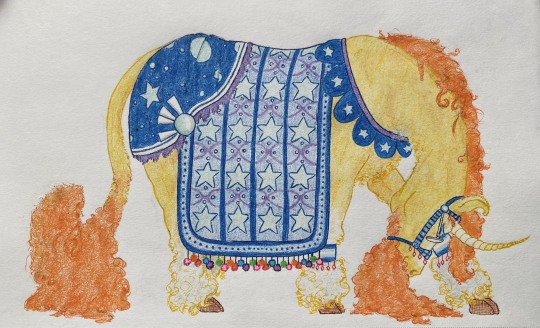

sunburst. 🦄💙💛
30 april 2023.
watercolour pencil and pen.
#my little pony#mlp#sunburst#sunburst my little pony#sunburst mlp#traditional art#mine#inspired by the marwari horse and their traditional indian attire#2023
40 notes
·
View notes
Text
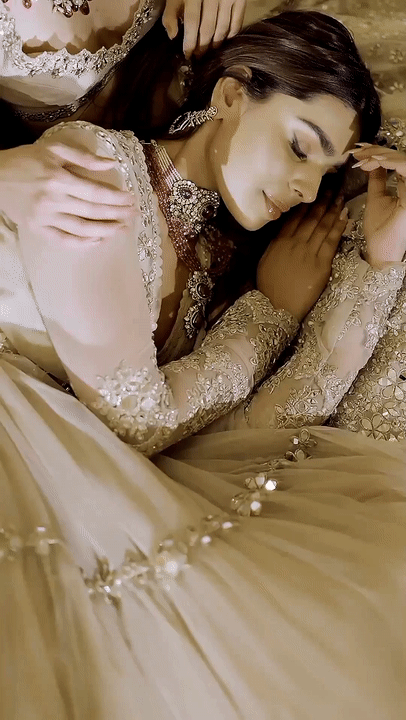

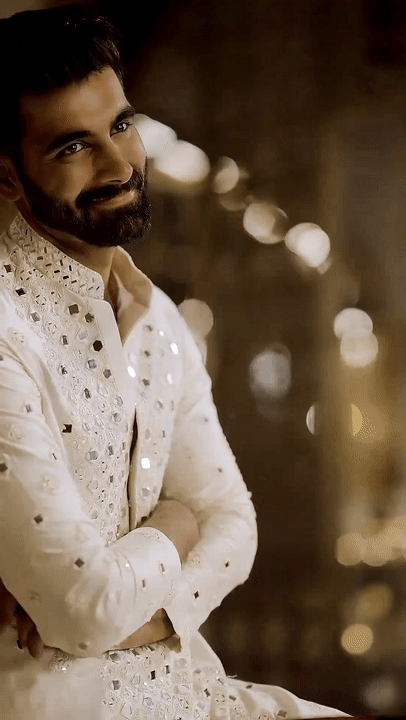

#indian beauty#aestheitcs#indian aesthetic#desi#indian#indian streets#indian Attire#fashion#desi fashion#fashion style#clothes#indian classical#indian clothes
15 notes
·
View notes
Text
Prakaravapra Kundala

Title: One from a Pair of Ear Ornaments (Prakaravapra Kundala)
Date: ca. 1st century B.C.
This exquisite pair of gold earrings in rare in having survived. While splendid jewelry adorns the regal and divine figures represented on early stone sculptures and terracotta plaques, few actual ornaments still exist. It is thought that jewelry was not kept and reused but instead was melted down possibly to avoid transmitting the karma of the former owner. In addition to clusters and rows of beads, each earring is decorated with a winged lion, and elephant and two vases filled with vegetation. Put on by slipping through a distended earlobe from the back, they are worn with the lion facing the wearer's cheek and the elephant on the outside.
The place of these earrings in the history of Indian art is assured, not only for their intrinsic beauty, but also because of the light they shed on the superb quality of early gold-smithing in this region. Early Indian statues of both male and female figures were usually portrayed with elaborate jewelry that sometimes seemed fanciful, since very little comparable jewelry from that period survived. The discovery of this pair of earrings provided the first tangible evidence that the jewelry depicted by the sculptors was in fact based on real exemplars, for a very similar pair is shown on a first century B.C. relief portrait of a Universal Ruler, the Chakravartin, from Jaggayapeta.
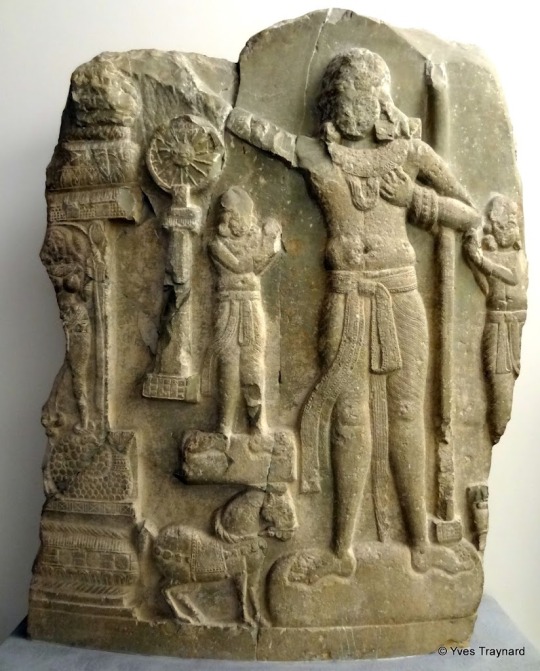
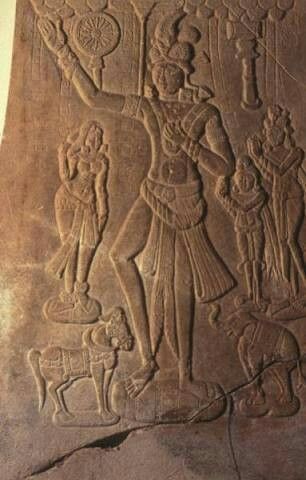
Stupa relief, Chakravartin Mandhata, the Universal Emperor. Virtual Museum of Images and Sounds.
These earrings, judging from their material worth, the excellence of craftsmanship, and the use of royal emblems (a winged lion and an elephant) as part of their design, were most probably made as royal commissions. Each earring is composed of two rectangular, budlike forms, growing outward from a central, double-stemmed tendril. The elephant and the lion of repoussé gold are consummately detailed, using granules, snipets of wire and sheet, and individually forged and hammered pieces of gold. The two pieces are not exactly identical: On the underside they are both decorated with a classical early Indian design of a vase containing three palmettes, but the patterning of the fronds differentiates the two earrings. They are so large and heavy that they must have distended the earlobes and rested on the shoulders of the wearer, like the pair worn by the Chakravartin.
The Metropolitan Museum of Art
For all those who are fascinated by the history of fashion in the Indian subcontinent, I invite you to join the Indian Fashion History Discord Server! You can find the link in the pinned post on my profile.
#desi aesthetic#indian culture#desi academia#indian jewelry#ancient#ancient india#ancient art#indian history#indian fashion#indian fashion history#indian aesthetic#indian academia#gold jewelry#gold earrings#ancient jewelry#indian attire#desi fashion#desi post#desi tag#desiblr#earrings#indian art#artefactporn#ancient history#archeology#material history#desi dark academia#desi light academia
194 notes
·
View notes
Text
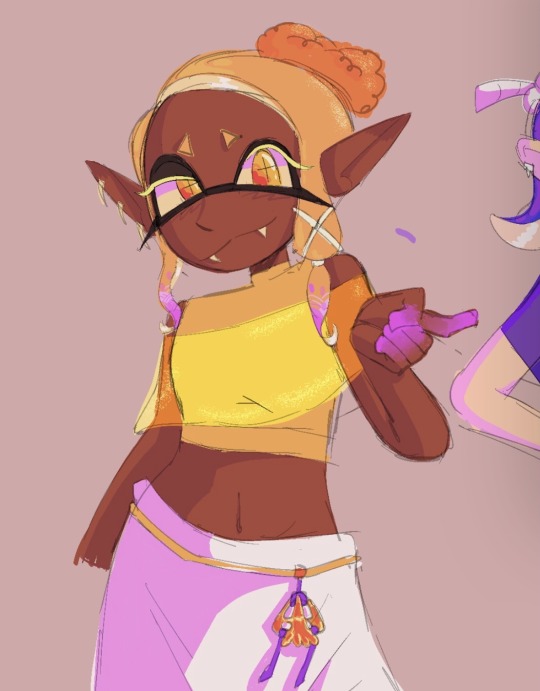
frye sketch….. ik her hand is missing but i don’t rlly care
#my art#splatoon#frye#love how my fav idols r always the ones who r upbeat ….. and have warm colors……..#anyway i luv luv LUUUUUV frye :3 i’m thinking of drawing her in traditional indian attire but i wanna do more research#i don’t wanna mess up on their culture yknow?
31 notes
·
View notes
Text
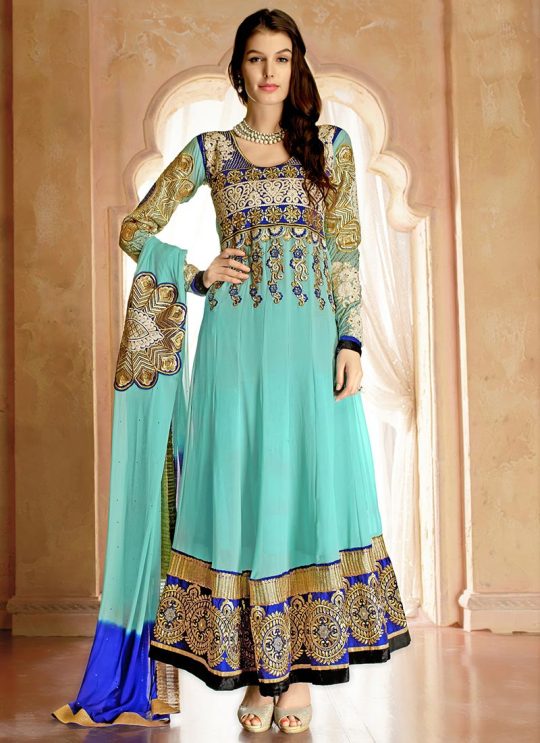
#Salwar Kamiz#شلوار قمیض#india#indian#indian fashion#indian folk#indian outfit#indian attire#indian costume#indian culture#asia#asian#asian folk costume#southeast asia#south asia#woman fashion#women's fashion#asian folk#asian fashion#asian costume#asian culture#asian outfit#asian attire
137 notes
·
View notes
Text
Crowley in Indian Saree because she will slay Indian attires ❤️

Saree in my mind is a Georgette saree
For people who don't know what a saree is, it's a single fabric long clothing material that south asian women drape. This is one of many draping styles, but also most common one.
#good omens#good omens 2#crowley#crowley in saree#crowley in indian attire#crowley in south asian attire#good omens fanart#good omens season 2
45 notes
·
View notes
Text
all trolls who have names derived from hindi words are south asian sorry I don't make the rules
#homestuck#times pieces#i just fuking realized how many there are????#hussie butchered my language man. hussie and all non indian fans#im not mad it's just kinda funny to me#cuz im indian myself. idk#maybe ill draw them in traditional indian attire. or humanstuck as indians#prolly not but someone should. okay
6 notes
·
View notes
Text
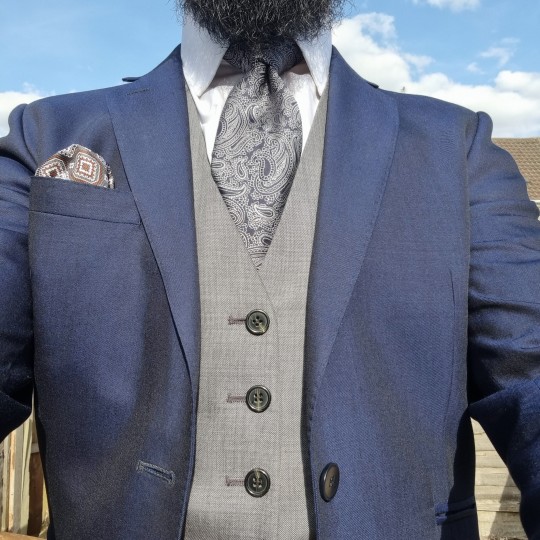
Decided on blue & grey today.
#menswear#suit#three piece suit#wool#silk#blue#grey#punjabi#desi#formal#formal attire#male attire#beard#tie#pocket square#wedding#indian#summer
11 notes
·
View notes
